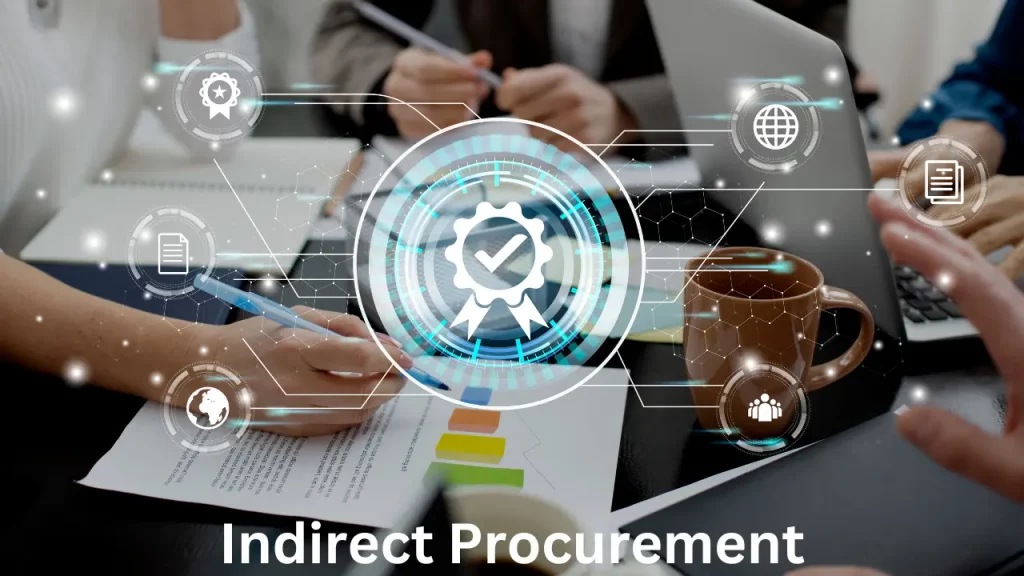In today’s competitive business environment, companies must streamline every aspect of their operations to remain efficient and profitable. One of the most overlooked yet critical areas in spend management is indirect procurement. This is where the Indirect Procurement Manager plays a vital role. With increasing digitalization and global supply chain complexity, the need for expert procurement professionals and robust procurement management software has never been greater.
What is an Indirect Procurement Manager?
An Indirect Procurement Manager is responsible for managing all purchases that are not directly related to the manufacturing or production of goods. Unlike direct procurement management—which involves buying raw materials for production—indirect procurement includes goods and services essential for day-to-day operations such as office supplies, software licenses, travel, facilities maintenance, marketing services, and professional consulting.

Their goal is not only to manage costs but also to optimize procurement strategies, reduce maverick spending, ensure compliance, and build relationships with reliable suppliers.
Key Responsibilities of an Indirect Procurement Manager
The responsibilities of an Indirect Procurement Manager are broad and strategic. They include:
1. Strategic Sourcing
Developing sourcing strategies that align with organizational goals. This includes evaluating supplier markets, consolidating purchases, and ensuring value through long-term partnerships.
2. Spend Analysis and Cost Control
Using data analytics and procurement management software to identify spending trends, reduce inefficiencies, and uncover cost-saving opportunities.
3. Supplier Management
Managing vendor performance, conducting supplier evaluations, and maintaining strong, ethical relationships that support business continuity and corporate social responsibility (CSR).
4. Contract Negotiation
Negotiating favorable terms and conditions for contracts including volume discounts, early payment benefits, and service-level agreements (SLAs).
5. Policy Enforcement and Compliance
Implementing company-wide procurement policies, educating staff on compliance protocols, and monitoring for unauthorized or maverick spend.
6. Process Automation and Efficiency
Deploying eProcurement and automation tools to streamline indirect purchasing processes and reduce approval cycle times.
Examples of Indirect Procurement Categories
The types of purchases an Indirect Procurement Manager oversees may include:
- Office supplies and furniture
- Travel and employee expense management
- Marketing and advertising services
- IT hardware, software licenses, and SaaS tools
- Human resource services (recruitment, onboarding)
- Facilities rent, utilities, and repair services
- Legal, accounting, and professional consulting
Why Indirect Procurement Matters More Than Ever
While indirect spend typically accounts for 15–30% of a company’s revenue, its impact on profitability and operational efficiency is substantial. With the rise of virtual services and SaaS platforms, the indirect procurement function has evolved into a strategic pillar of business management.

Organizations that neglect indirect spend often fall into common pitfalls such as:
- Fragmented supplier relationships
- Lack of spend visibility
- Inefficient approval workflows
- Higher-than-necessary operational costs
Skills Every Indirect Procurement Manager Should Possess
To successfully manage diverse purchases across multiple departments and regions, Indirect Procurement Managers must demonstrate a mix of strategic, technical, and interpersonal skills:
- Data literacy for spend analysis
- Negotiation skills for vendor and contract management
- Category management expertise
- Knowledge of local regulations in multi-national corporations
- Tech savviness with tools like AI-driven procurement systems
How Procurement Management Software Supports Indirect Procurement
Modern procurement management software plays a pivotal role in enabling Indirect Procurement Managers to achieve their goals. These tools offer:
- Centralized procurement dashboards
- Automated purchase workflows
- Contract lifecycle management
- Vendor performance scoring
- Spend visibility and reporting
- ERP and finance system integration
By digitizing and automating procurement processes, companies reduce errors, avoid rogue spending, and improve financial control. These systems are especially valuable in tracking SaaS licenses, managing travel costs, and optimizing supplier agreements.
7 Common Challenges of Indirect Procurement
- Lack of visibility and control: Indirect procurement typically involves frequent, low-value transactions across many departments. This decentralized activity makes tracking and controlling expenditures extremely difficult.
- Fragmented procurement processes: Without standardization, departments may follow their own informal processes, leading to inefficiencies, miscommunication, and compliance risks.
- Inadequate data and analytics: Limited visibility into purchasing data prevents companies from identifying trends, eliminating waste, or negotiating effectively with vendors.
- Complex supplier landscape: Organizations may use a broad supplier base for indirect procurement, making vendor management more difficult and reducing the potential for volume-based savings.
- Compliance issues: Without centralized oversight, it’s challenging to enforce procurement policies and maintain consistency across departments.
- Limited strategic focus: Indirect procurement often receives less attention and fewer resources compared to direct procurement, leading to missed optimization opportunities.
- Difficulty in measuring ROI: Because these purchases don’t directly contribute to end products, quantifying their value can be tricky—making it harder to justify investments in better processes or tools.
Best Practices to Improve Indirect Procurement
Despite the inherent challenges, implementing key best practices can streamline indirect procurement and generate significant savings.

- Consolidate suppliers: Reducing the number of vendors simplifies the procurement process, increases negotiation leverage, and ensures more consistent quality and pricing.
- Implement a preferred supplier program: Establishing relationships with select vendors ensures quality, reduces administrative work, and creates opportunities for better pricing through long-term agreements.
- Standardize procurement policies and processes: Creating a uniform approach across all departments improves transparency, reduces errors, and ensures compliance with both internal policies and external regulations.
- Conduct regular spend analysis: Periodic analysis helps identify overspending, eliminate duplicate orders, and uncover opportunities for cost-saving initiatives.
- Monitor supplier performance: Track supplier KPIs like delivery speed, order accuracy, and responsiveness to ensure reliability and maintain procurement standards.
ROI-Boosting Benefits of Indirect Procurement Management
Implementing a strong indirect procurement system drives measurable business benefits:
- Cost savings: With better visibility and control, organizations can reduce waste and identify cost-reduction opportunities.
- Improved efficiency: Automating procurement tasks reduces the time and effort required to place, track, and pay for orders.
- Better supplier performance: With centralized data, it becomes easier to evaluate vendor performance and take corrective action when needed.
- Risk mitigation: Strong processes reduce exposure to regulatory issues, vendor unreliability, and non-compliant purchases.
- Enhanced spend visibility: Transparency in indirect spend helps organizations align purchasing with strategic goals and improve budget forecasting.
- Greater productivity: Streamlined workflows free up employees to focus on higher-value tasks, improving satisfaction and overall operational output.
5 Strategies to Streamline Indirect Procurement
- Reduce manual record keeping: Implement digital tools to automate procurement data capture and eliminate human error.
- Simplify line items: Consolidate purchase orders to reduce redundancy and excess line items.
- Streamline the requisition process: Make it easier and faster to submit and approve purchases, reducing delays and improving response times.
- Implement electronic payments: Move to digital payment solutions to improve processing speed and ensure better audit trails.
- Leverage procurement technology: Use platforms like Order.co to automate purchasing, approvals, and reporting for better control and efficiency.
Conclusion: Why the Indirect Procurement Manager Role is Critical
The Indirect Procurement Manager plays an essential role in maximizing business efficiency, reducing costs, and driving strategic value across all non-production purchases. As indirect spend continues to grow, organizations must empower procurement leaders with the tools and autonomy they need to succeed.
Facility Bot: The Best CMMS and Procurement Management Software
If you’re looking to streamline your indirect procurement process, improve asset tracking, and gain complete visibility into your organization’s maintenance operations, Facility Bot is the ideal solution. As a leading CMMS software in Singapore, Facility Bot offers integrated features for work order management, preventive maintenance, and vendor coordination. With robust procurement management software capabilities, Facility Bot empowers procurement and facilities teams to control spending, evaluate suppliers, automate workflows, and enhance operational efficiency—all from a user-friendly platform.
Ready to modernize your procurement process? Choose Facility Bot and experience the future of facilities and procurement management.




